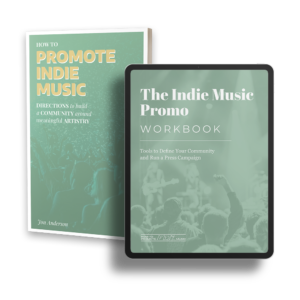This week’s music marketing thought:
If you don’t have an exclusive community for fans of your music, you’re missing out.
The bad news is that, if there isn’t a way that your fans can self-identify as your fans, then a) you don’t really have fans – probably just followers – and b) you won’t be able to make a living from your music.
(Well, unless you do really well with sync licensing. But that’s a whole other topic.)
The good news is that having an exclusive community is a) not that hard and b) super rewarding.
The key, though, is that it needs to be exclusive. As in, membership can’t be as simple as hitting a “Follow” button; it has to require some kind of semi-sacrificial action to join.
“Shared action” is one of the core components of a healthy community. When your fans act to support you, they are more likely to continue to act to support you. Think about it… who’s more likely to go to your next show – someone who’s never been to one of your shows? Or someone who’s been to three?
Say what you want to about that three-show-fan, but you can’t deny that they’re into your music.
The rub is this: You need to give people options to support you. It’s not enough to have music on Spotify. Successful artists provide tangible ways for fans to be involved with their careers.
Three examples:
1. A newsletter / email list.
This is the most basic form of what I’m talking about. Someone gives you their email. They get to be a part of your newsletter.
This format has worked since 1999. It still works. (Hence this email.)
Sure, the community relationship via email isn’t as deep as if they’d sacrificed more. But it’s deeper than if they’d just clicked a follow button in passing.
(And when I say “email isn’t as deep”, I’m not talking about you and me, obviously. We’re tight.)
2. A texting group.
I’m working with an artist named Joel to build a texting group. It’s the standard list thing – fans sign up by giving their phone number, he gets access to occasionally text them release updates and tour info.
The difference, though, is that he’s actually going to text back and forth with the people on the list personally. Each Tuesday at 10am, he’s announcing a topic on Instagram – usually something around one of his songs – and asking people to text him their questions. Then carving out an hour to respond to fan texts.
(Key note here: We’re using SimpleTexting, so he’s not giving out his personal phone number.)
I’m pretty excited to see how this goes and I think it could be really sweet. It’s on-brand and a cool way for fans to feel like a part of his journey. If it works, I’ll do another post and break it down in more detail.
3. Patreon.
It’s hard to build a Patreon community, but it can very fulfilling (and a helpful piece of the financial puzzle). The crucial thing is that you need to invest enough into the community for it to feel worthwhile to the people inside.
Actually, that’s true for any community you build.
The more you put in, the more your fans will get out.
And the more they’ll engage with and support you.
I tend to think you should spend ~80% of your “marketing” efforts on the people who are already your fans. Obviously, you need to start somewhere – but once you do have a community, that’s where your focus should be.
Build an exclusive community. Then invest in it.
I think that’s the key to actually having fans, not just followers.

